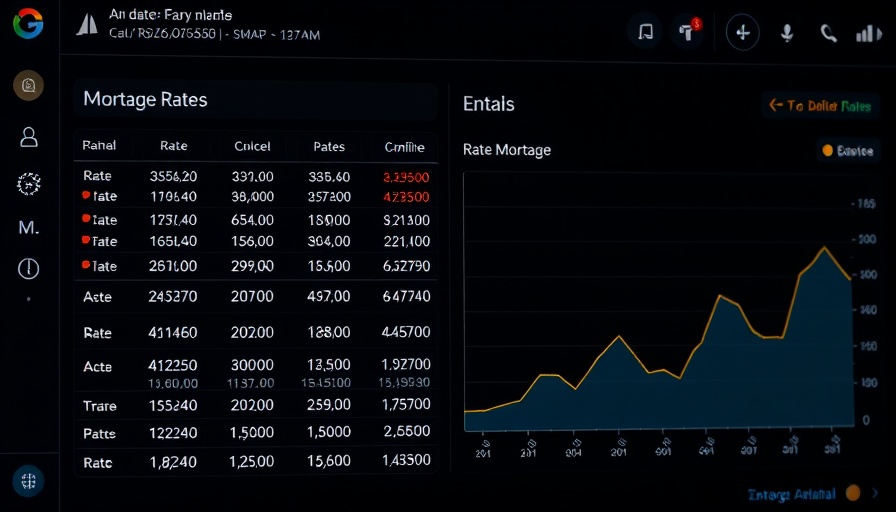
The Current Landscape of Mortgage Rates
As we delve into the present mortgage market, it's critical to note the recent fluctuations in rates. Following a significant dip to levels not seen in almost a year, the 30-year fixed mortgage rate experienced an uptick last Wednesday after the Federal Reserve's recent announcements. Initially, rates saw a brief rise, reaching approximately 6.375% by the end of last week, down from a low of 6.125%. Such volatility in the market is not uncommon, particularly in response to broader economic indicators and central bank communications.
Fed’s Impact on Mortgage Rates
The Federal Reserve’s recent decisions have had a direct impact on mortgage rates, notably after the anticipation surrounding the rate cuts. While the Fed’s overall message was cautiously optimistic, commitments from Chair Jerome Powell and other board members have injected uncertainty into the market. Upcoming speeches from Fed officials this week could further influence market sentiment, potentially causing fluctuations although not on the scale witnessed last week.
The Importance of Economic Indicators
Looking ahead, all eyes will be on the forthcoming jobs report. Historically, these economic data releases have shown the power to either stabilize or disrupt mortgage interest rates. A strong job report may reaffirm the Fed's confidence in the economy and push rates upward, while disappointing figures could encourage a retreat to more favorable borrowing conditions.
What Homebuyers Need to Know
The current mortgage rate environment poses unique challenges and opportunities for homebuyers. For many, understanding the nuances of rate fluctuations can make the difference in long-term financial commitments. As we navigate these turbulent waters, prospective buyers and refinancers should stay informed not just about current rates but also about broader economic trends that may influence their decisions.
Anticipated Trends in Mortgage Rates
While rates appear stable for now, the mortgage landscape is inherently unpredictable. Economic indicators are just around the corner, and speculating on what comes next can be as crucial as reacting to the news. Analysts suggest that buyers should consider locking in rates while they remain relatively low compared to historical standards. This proactive approach can mitigate risks associated with sudden spikes that could diminish affordability.
Conclusion: Staying Informed
In conclusion, navigating the mortgage market requires vigilance and a keen understanding of economic trends. With the Fed's upcoming communications and essential economic data releases ahead, it will be essential for consumers to stay informed. Leveraging tools and resources—such as rate alerts and mortgage calculators—can provide a competitive edge.
To keep your finger on the pulse of mortgage rates and market trends, subscribe to our newsletter for daily updates and alerts. Understanding and reacting to these changes can empower you in your home financing journey, ensuring you make the most informed decisions possible.
 Add Row
Add Row  Add
Add 




Write A Comment